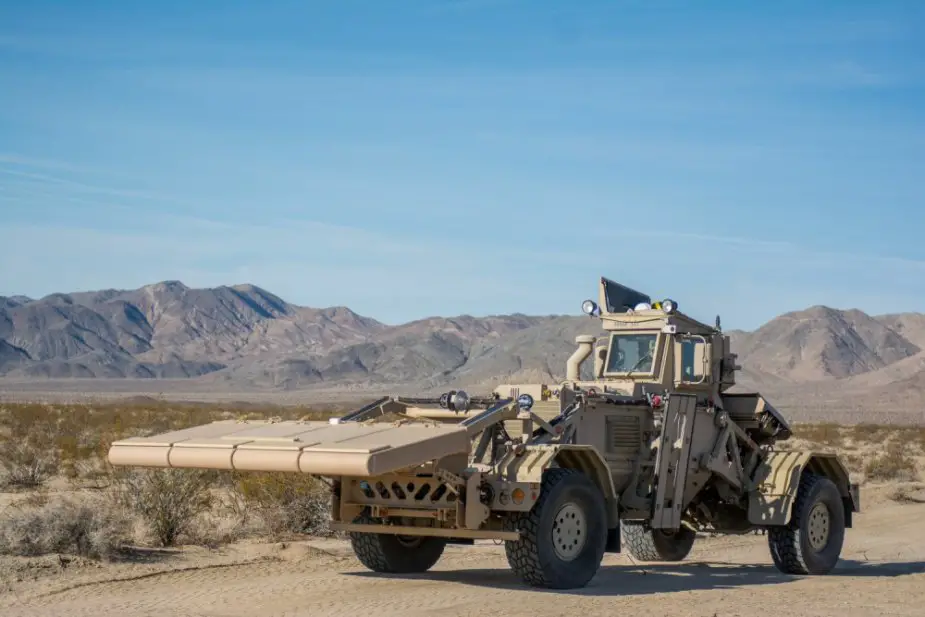The Latvian Home Guard has received Husky Vehicle Mounted Mine Detectors (VMMD) provided by the United States. The Husky mine clearance vehicles will be used by the 54th Engineers Battalion of the 2nd Vidzeme Brigade of the Latvian Home Guard for safe detection of mines and unexploded ordnance. Under the US Foreign Military Financing Program, the US has provided Latvia with three Huskies, personnel training and technical support. The total value of the support is more than USD 8 mn (EUR 7.2 mn).

Husky VMMD (Picture source: U.S. Army)
The Husky VMMD (vehicle-mounted mine detection) family of vehicles are blast-survivable, mission-configurable wheeled platforms employed around the world by specialized route clearance teams operating in high-explosive threat areas. Defined by their unique design characteristics of survivability, frangibility, and reparability, Husky vehicles enable personnel and payloads to safely operate in close proximity to sub-surface explosive hazards. The Husky is manufactured in South Africa by DCD Protected Mobility and then integrated with clearance payloads, provided, and supported by U.S.-based C-IED solutions company, Critical Solutions International.
The Husky traces its lineage back to the Rhodesian mine detection vehicle "Pookie". Originally used as the lead element of a mine removal convoy, the Husky was employed as part of the Chubby mine detection system. The early Chubby system comprised a lead detection vehicle (the Meerkat), a second proofing vehicle (the Husky) towing a mine-detonation trailer, and a third vehicle carrying spare parts for expedient blast repair.
The Husky was initially deployed in the 1970s and used extensively by the South African Defence Force to clear military convoy routes of mines in Namibia and Angola during the South African Border War and it was during these first vehicle deployments that much of the early V-hull and Mine-Resistant Ambush Protected (MRAP) technology evolved.
In the mid-90s, CSI partnered with DCD to bring the technology to the US and would later successfully navigate a two-year foreign comparative test (FCT) program with the US DoD as well as follow-on modifications and testing. In 1997, in an announcement given by US President Clinton, CSI was directed to produce and deliver production systems under the US Army Interim Vehicle Mounted Mine Detection (IVMMD) Program. CSI, in collaboration with its manufacturing partner DCD, delivered the Vehicle Mounted Mine Detection (VMMD) systems to the United States for incorporation with U.S. managed technologies.
Over the next twenty years, the Husky went through a number of iterations and upgrades to evolve into the modern Husky Mk III and Husky 2G currently offered by CSI. Today, U.S. clearance units employ Husky vehicles as their primary detection assets and lead clearance vehicles.
The current Program of Record (M1231) for the U.S. Army. The Mk III is the modern single-occupant Husky model. The platform is integrated with pulse induction metal detector panels and overpass tires that enable operators to regulate tire air pressure in order to reduce the risk of initiating victim-operated, pressure-fused, anti-vehicle landmines without causing detonation. As with all Husky platforms, the Mk III has been engineered in a unique modular, frangible configuration. In the event of a mine or improvised explosive device detonation, vehicle components break apart in a predictable fashion, reducing damage to the platform and occupants, as well as facilitating fast in-field repairs using the system’s RedPack, a towable asset comprising front and rear modules as well as a battle damage repair tool kit.
A two-occupant version of the Husky MK III vehicle. Development of the Husky 2G was prompted by the need to effectively conduct longer missions and employ multiple advanced detection systems. The Husky 2G was designed with the same protection, survivability, and mobility characteristics as the original Husky MK III, but integration of more sophisticated high sensitivity detectors, ground-penetrating radar, and video optics suites, and remote weapon stations created the need for a second operator to manage the additional workload.














